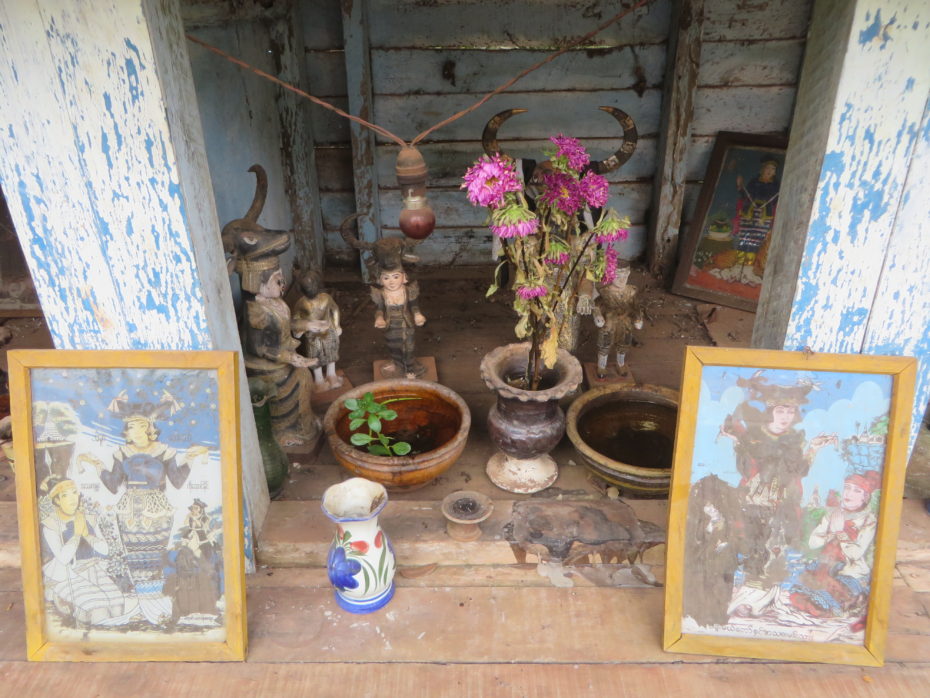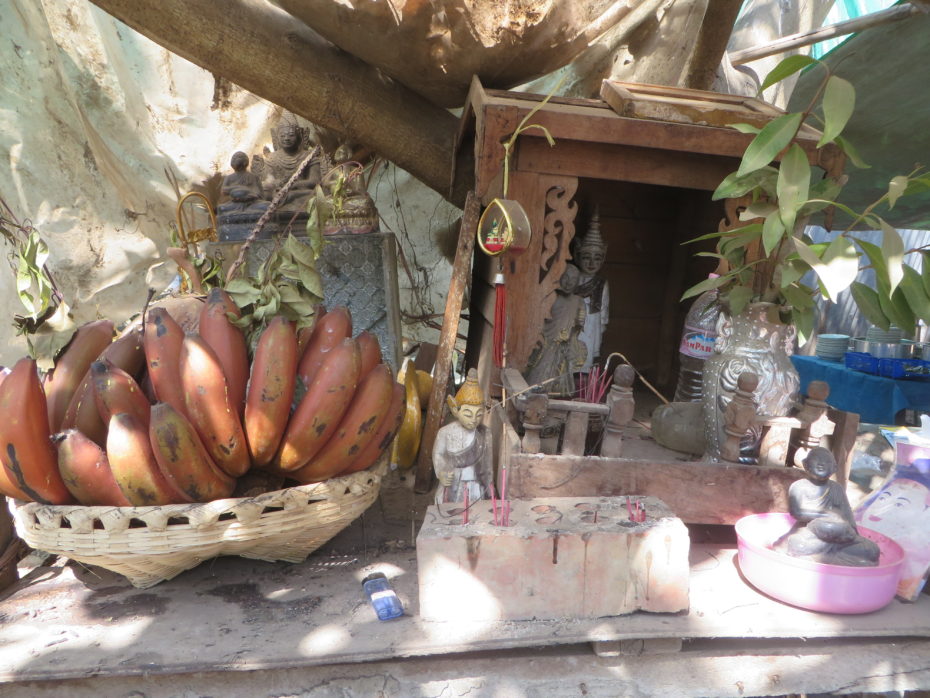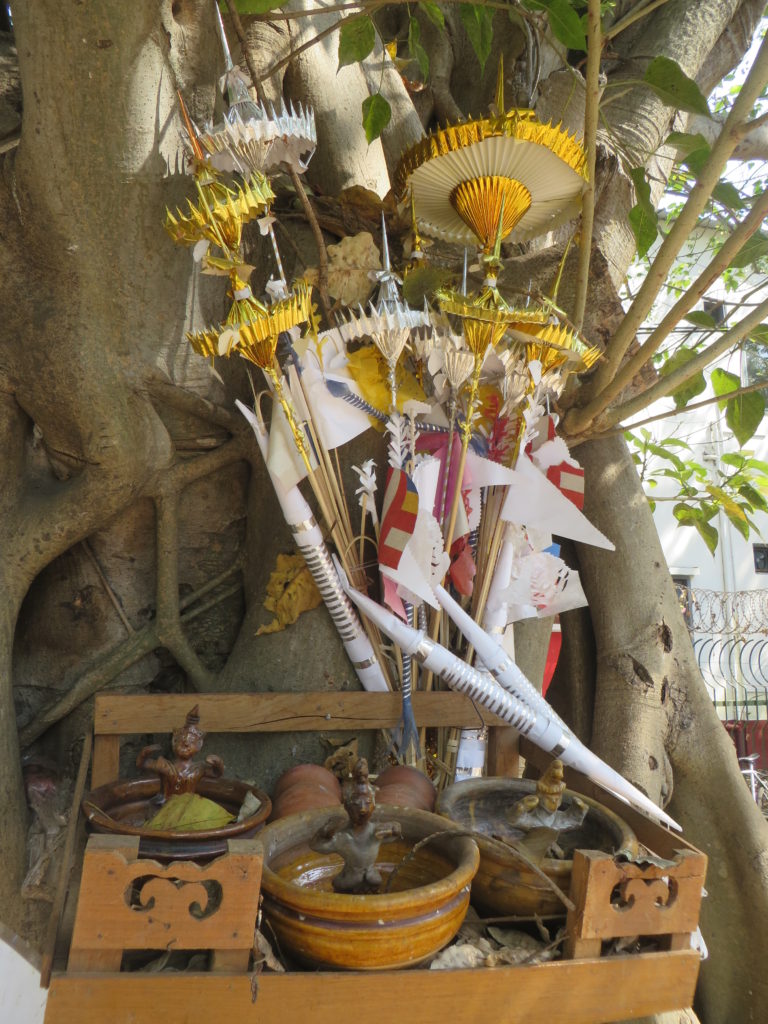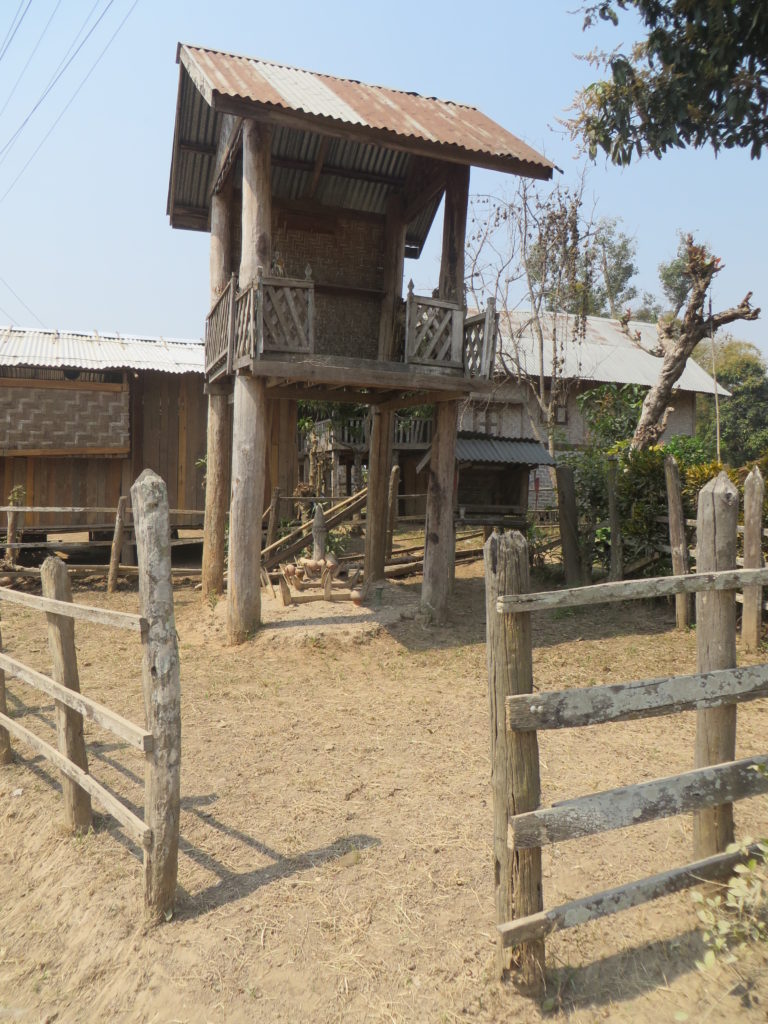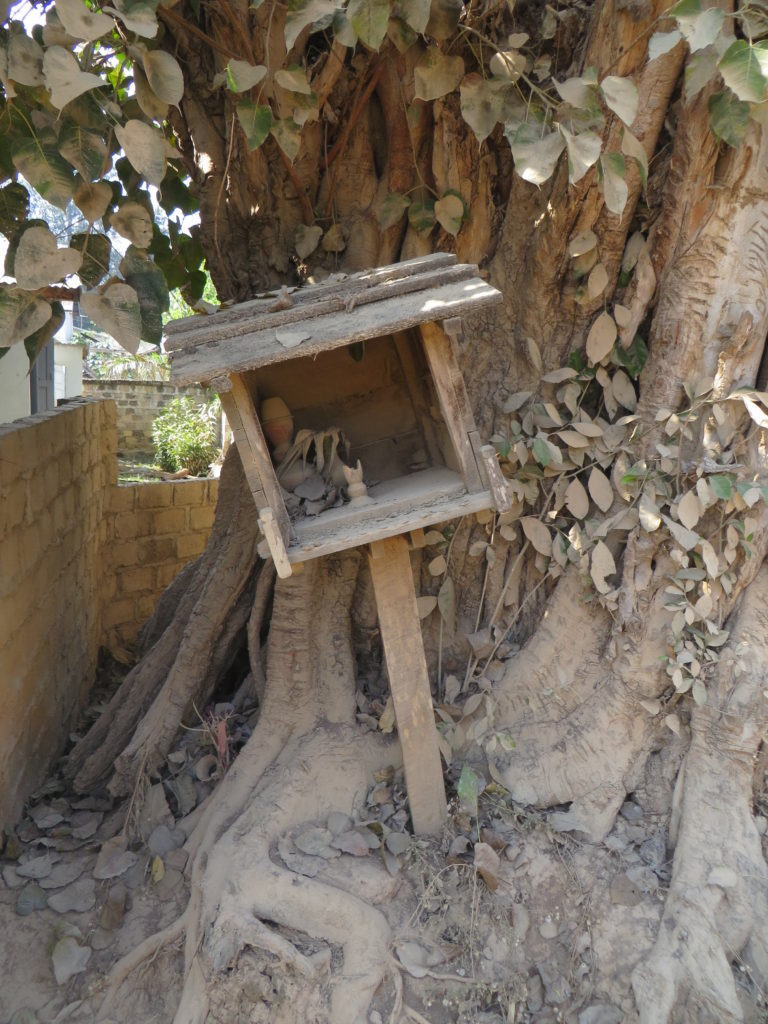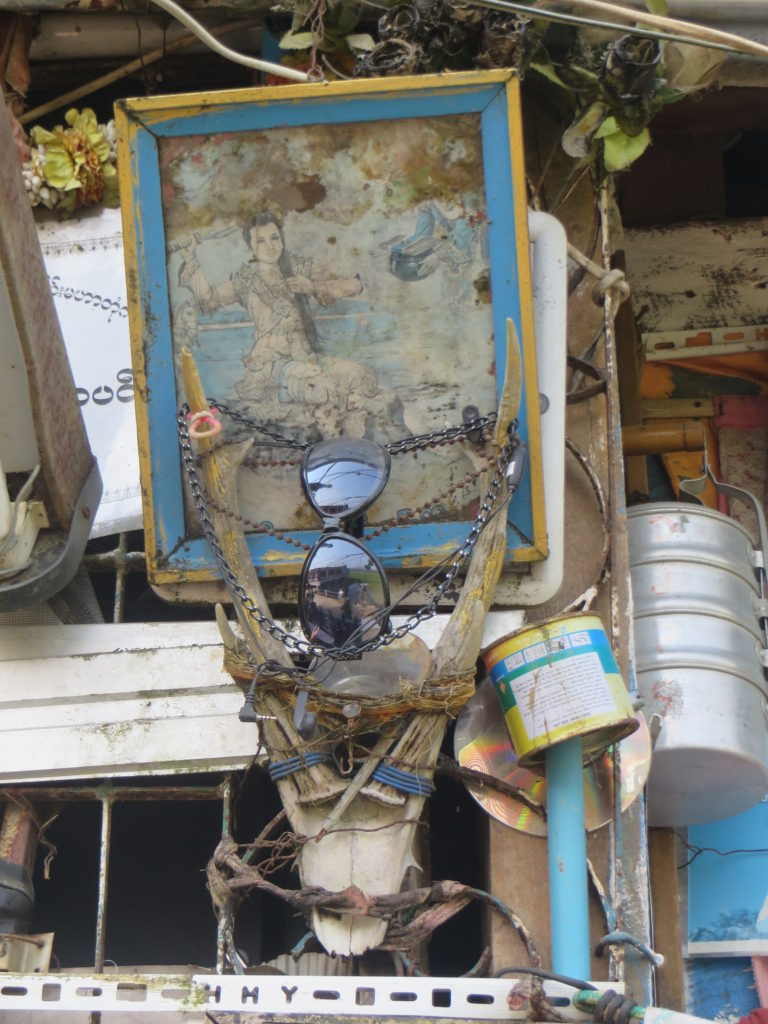From the serenity of dusty village tracks to the fumes and klaxons of hectic Yangon streets you never have to go far to find a little shelter of spirituality: a nat shrine. Nats are spirits, whose worship predates the arrival of Buddhism and has endured, despite the occasional efforts by the powers that be to quash its practice. In fact it was the 11th century king Anawrahta’s efforts to do so that only served to alienate people from his state’s Buddhism, obliging him to institutionalize Nat worship by introducing an official pantheon of spirits.
In their earliest form they were tied to a piece of land and had to be placated if disturbed by the building of a house or digging of a field. Later, by at least a thousand years ago, they became the spirits of people, often royalty who had died violent or tragic deaths and whose personal story reflected the dominion over which they had influence. Thon Pan Hia, known as Three Times Lady Beautiful, died of heartache when abandoned by her husband the king – her spirit guards beautiful women. Pakhan U Min Kyaw demonstrates the often contrary nature of nats – he himself was killed by the spirits of two men he murdered and is the guardian of drunks and gamblers. Celebrations in his name and with others can involve much consumption of alcohol, music and dancing. Quite what the delightfully named Lady Bandy Legs oversees I never found out but the name is worthy of veneration on its own.
Each village has its own particular nat with a shrine but individual households have their own, represented by a coconut with a form of headdress decoration. These spirits need to be given offerings such as drinks, flowers, cigarettes and incense, not only to ask for their intercession but to prevent them causing mischief.
Nat worship exits alongside Buddhism and shrines can even be found in temples, so engrained is the belief, despite the apparent contradictions with Buddhist practice at times, like getting drunk in the name of worship. Spirit mediums who can invoke the nat into their bodies during ceremonies have traditionally been women but transsexuals and transvestites are not unknown to fulfill the task.
A couple of typical examples
Great old trees are often home to nat and or Buddhist shrines combined.
Structures, such as the one below serve a whole village for an annual veneration of the nat spirits but may remain largely untouched for much of the year apart from small offerings at the shrine underneath.
Some remain unloved however.
I have a feeling some not entirely traditional nats may be worshipped at times.
I leave you with my favorite, although I admit to having no comprehension of its religious significance but this bonkers collection of junk and oddities, such as broken dolls, clocks and a picture of the Thai king would liven up any religion.




